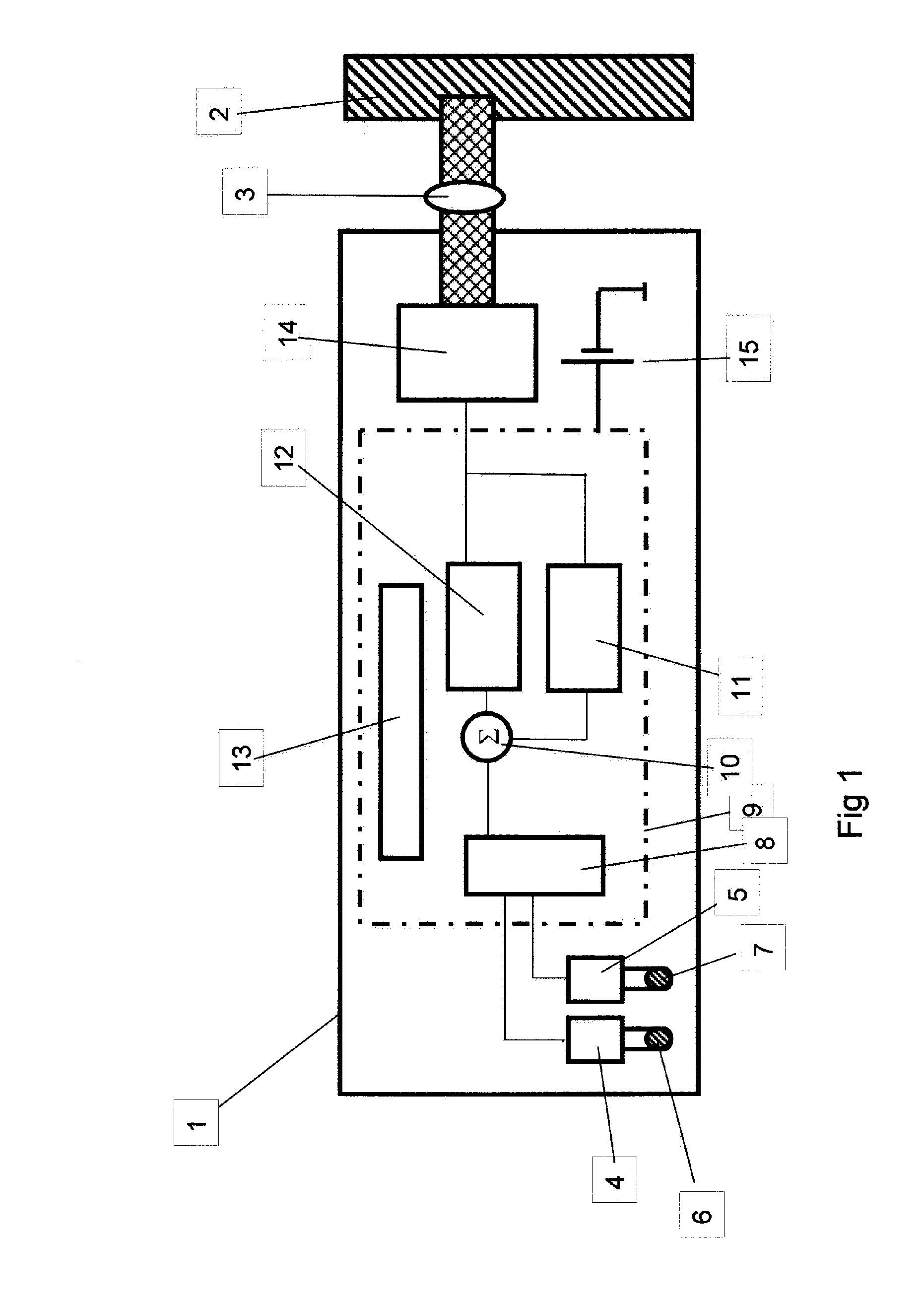Microphone system for bone anchored bone conduction hearing aids
- Summary
- Abstract
- Description
- Claims
- Application Information
AI Technical Summary
Benefits of technology
Problems solved by technology
Method used
Image
Examples
Embodiment Construction
[0021] In FIG. 1, a preferred embodiment of a bone anchored bone conduction hearing aid 1 is shown. The hearing aid is connected to the skull bone via a coupling 4. The hearing aid 1 has a front microphone 4 and a rear microphone 5. The front microphone 4 has a corresponding front sound inlet 6 and the rear microphone 5 has a corresponding rear sound inlet 7. The hearing aid has a microphone processing circuit 8 in the electronic module 9. In a summation circuit 10 the signal from the microphone processing circuit 8 is summarized with the signal from an adaptive feedback cancellation circuit 11. The signal then goes into the amplifier 12. The electronic circuit has a programmable circuit 13 where the sound processing parameters and the processing of the microphone processing circuit can be programmed.
[0022] The signal from the amplifier 12 goes into the vibrator 14. The electronic circuit is powered by a battery 15.
[0023]FIG. 2 shows the front sound inlet 6 and the rear sound inle...
PUM
 Login to View More
Login to View More Abstract
Description
Claims
Application Information
 Login to View More
Login to View More - R&D
- Intellectual Property
- Life Sciences
- Materials
- Tech Scout
- Unparalleled Data Quality
- Higher Quality Content
- 60% Fewer Hallucinations
Browse by: Latest US Patents, China's latest patents, Technical Efficacy Thesaurus, Application Domain, Technology Topic, Popular Technical Reports.
© 2025 PatSnap. All rights reserved.Legal|Privacy policy|Modern Slavery Act Transparency Statement|Sitemap|About US| Contact US: help@patsnap.com



